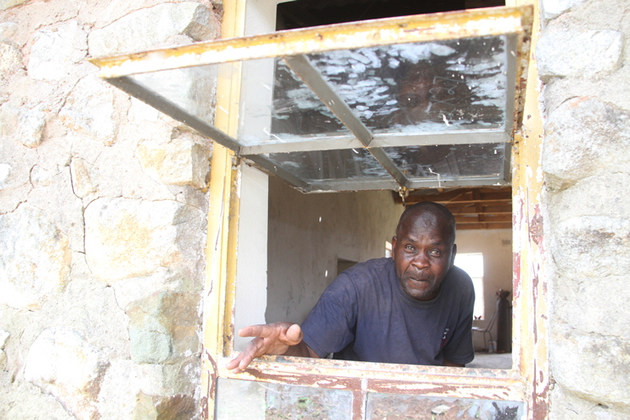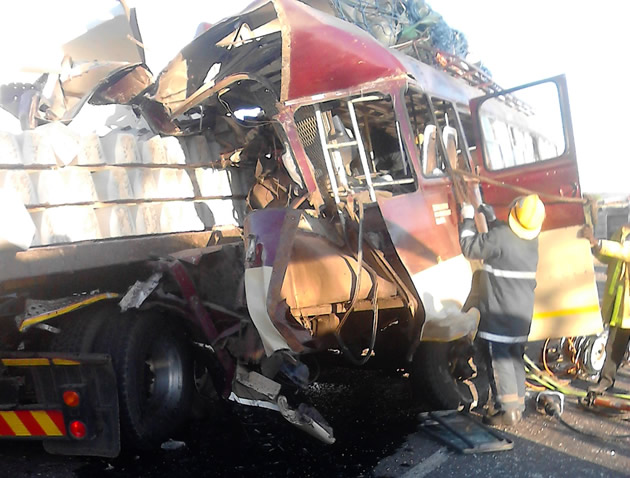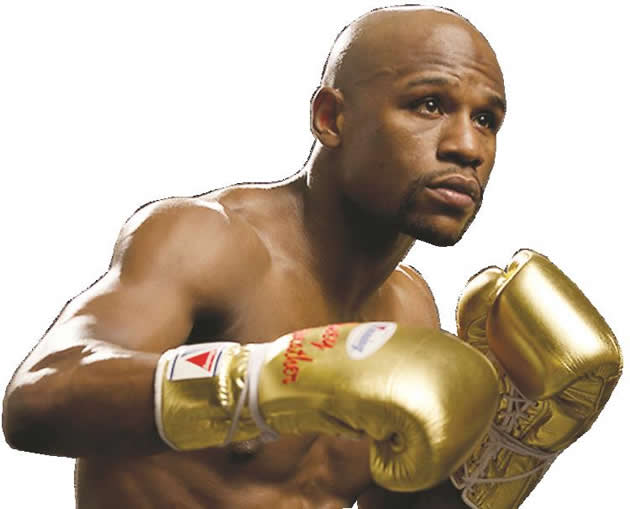40 years on: Retracing President Mugabe’s journey into Mozambique


Cde Elvis Muomba shows the window through which President Mugabe escaped the Rhodesian forces on his way to lead the struggle in Mozambique
Tichaona Zindoga Political Editor
NOT every journey is memorable or a permanent historical marker. It is different with April 4, though. This is a day when a historic journey was made: President Mugabe’s crossing into Mozambique to direct the liberation struggle from the front, literally.
The year was 1975.
zanu Chairman Dr Herbert Chitepo had been assassinated by the Rhodesian regime’s operatives in Zambia on March 18 and zanu leaders, including Josiah Tongogara, arrested wrongly for the offence and facing lengthy jail terms.
The president of zanu, Ndabaningi Sithole was in prison back home in Rhodesia. The liberation war effort faced derailment.
The zanu executive then instructed Cde Mugabe, who was the party’s secretary-general and most senior member, to go to Mozambique to lead the struggle.
He was accompanied by (now late) Cde Edgar Tekere. Cde Mugabe himself had just come out of an 11 year incarceration in Rhodesian strongman Ian Smith’s prisons.
Thus began the journey that would take President Mugabe from the relative comforts and parleys of the city, particularly in Highfield, which was a hotbed of political consciousness, to the mountains and thick forests of Nyanga and eventually across the border into Mozambique where his first port of call was a small town called Villa Gouveia now known as Catandica.
The Herald this week sought to piece together the people and places that were involved in the journey that began sometime in March. Cephas Muropa (60), who lives at Number 8 Kenilworth Road in Belvedere in Harare was a young man working at Boulders Farm, a Cold Comfort facility near Ruwa Rehabilitation Centre, whose leader was a Roman Catholic called John Deary.
Cold Comfort Farms were a cover for the politicisation and recruitment of cadres. Under the leadership of the late Cde Moven Mahachi who was the manager of the original Cold Comfort farm at Nyafaru in Chief Tangwena’s area of Nyanga, Cde Muropa and Robert Gumbo were responsible for the modalities of the movement of Cdes Mugabe and Tekere from Ruwa to Nyafaru.
We caught up with Cde Muropa and he detailed his role in Cde Mugabe’s passage to Mozambique, beginning with the first encounter as Cde Mugabe left for the Lusaka détente talks and then as Cde Mugabe left for Mozambique.
“One day, after Robert Gumbo and I had finished what we were doing and it was getting late we went to see John Deary at about 9pm,” recounts Muropa.
“We were actually surprised to see none other than Cde Mugabe and we greeted him. He explained to us about the assassination of Chitepo and the paralysis of the movement.
“That was a drawback as far as the liberation struggle was concerned. The executive of zanu had chosen Cde Mugabe to go to Mozambique to lead in the capacity of Cde Chitepo. He was the secretary general of zanu,” explained Cde Muropa.
“At that time the Frontline States had organised the Détente and allowed the release of political prisoners such as Cde Mugabe so that they could attend the Lusaka Conference.
“If the conference succeeded, there would be compromises and if they failed they would go back to prison.
“At that time the leader of zanu was Ndabaningi Sithole, but at that juncture a document had been leaked from prison stating that Sithole was planning to assassinate Smith. This document was seen by the regime’s Central Intelligence Organisation, meaning that Sithole had to appear in court to answer to those allegations. So Sithole was not going to represent zanu hence the choice of Cde Mugabe in Lusaka,” said Cde Muropa.
The men talked well into the night.
Cde Muropa said President Mugabe exhibited extensive knowledge of current affairs and was also impressed by what the youths at Boulders Farm were doing in trying to approach farming as a business.
“He said farming was regarded as inferior in the white education system, but we had to prepare to use land when we took it,” said Cde Muropa.
“We were served coffee and tea by Mr Deary, but one thing that struck me was that Cde Mugabe didn’t take one sip of coffee or touch the biscuits. He was a security conscious man because we had discussed a lot of security matters relating to the death of Chitepo. In our discussions there we no whites, we were only blacks and the whites occasionally came back to refill our tea,” said Cde Muropa.
Cde Mugabe then left for Lusaka.
“After some days we received a phone call from a Roman Catholic Sister Aquina who told us that Cde Mugabe was in trouble and the whole State security apparatus was looking for three men namely, Cdes Mugabe, Enos Nkala and Edgar Tekere,” he recounted.
“She asked if we could organise the escape of these men from Salisbury to Nyanga, a place called Nyafaru. That place was in Tangwena’s area and at that time there was a war between the Tangwena people and whites as the people resisted being moved.
“We felt burdened as to how we could organise such a trip. We phoned Nyafaru and talked to Mahachi who was our boss. We used codes to avoid detection. So we said, ‘Cde Mahachi taita problem nehwai dzedu. Tine ma-rams atakatenga ave in a bad state so we need your assistance, we do not have transport to take them back’. So he knew what we meant and drove immediately.”
“When Cde Mahachi came we briefed him before the guys came,” said Cde Muropa.
Interestingly, they did not know where Cde Mugabe and others were at that point, knowing later on that they had been housed at Roman Catholic priest Father Ribeiro’s house.
“A car was arranged to bring them from somewhere in Highlands to come to Ruwa. They came just the two of them without Nkala who was acting as their security, arriving shortly after midnight there,” he said.
Cde Muropa said that the transaction took place at the back cottage and Mr Deary did not know of the incident until after Independence.
“Cde Mahachi gave a brief on the nature of the roads and luckily on that day no roadblock was set up at all,” said Cde Muropa.
With Cde Mahachi driving accompanied by Cde Gumbo the party made for Nyafaru, stopping briefly for refreshments in the Nyabadza area along Nyanga road before proceeding to Nyafaru. Such an incident-free journey: the CIO should have known, surely?
There has been speculation that the security apparatus deliberately let the journey be and allowed Cde Mugabe to escape into Mozambique. Cde Muropa avers that the CIO knew nothing of the journey and the success was down to their own intelligence and planning.
“Those are pure lies (that CIO knew),” says Cde Muropa.
“I can tell you that they had a story two or three days later saying that they were looking for Mugabe and Tekere and then they said a car had been found abandoned in Mutare suggesting they had crossed the border at Forbes.
“It was all propaganda. They didn’t know what had happened,” said Cde Muropa.
Journey to Nyafaru
We trace the 370km journey from Ruwa to Nyafaru. The road is uneventful, largely; sleepy, even. From Ruwa eastwards the next town is Marondera and then Rusape where one branches left into Nyanga road which greets one with a freshness of air that gets crisper as one travels past the rolling mountains and valleys towards the land of Tangwena.
Before reaching Nyanga town one turns right towards Troutbeck Inn, an idyllic resort that is the toast of Nyanga’s famed serenity. But once one leaves the tarred road, which has its own dangers — remember the Nyanga bus disaster where schoolchildren perished, a reminder of which is a grim, lonely white cross that stands on the side of the road — the romanticism is gone.
The dust road to Nyafaru is tortuous with steep ascents and descents and hillocks and treacherous curves. During a rainy season like the one currently experienced in Nyanga, the road is at its worst as it is wasted by rains.
When one reaches Nyafaru, a feeling of relief is involuntary as it not only represents some hospitality and life but also exudes a quiet order with its old buildings making up primary and secondary schools, a clinic and staff residences. The establishment itself stands on a strategically raised position where one has a view of what happens below the escarpment.
This is the place where President Mugabe made a famous stopover. This is the place where Elvis Muomba (58) met the most famous person he has ever known.
And he revels in that glory.
Muomba was one of the “workers” at Nyafaru under the leadership of Cde Mahachi.
He explains the now-common knowledge of Nyafaru’s political activities. He says that the centre was used as a recruitment and transit point for young people seeking to join the war in Mozambique. And that includes Morrison Nyathi, who later sold out at Chimoio.
Cde Muomba was acting as a political commissar and would share a lot of information, he says, with Cde Mahachi such that by day they worked normally as a cooperative and at night he would teach politics and songs.
“It was through this that we received Cde Mugabe as he came through Roman Catholic sisters and went to our farm in Ruwa where he was taken care of by Cde Robert “Kwelekwele” Gumbo and Cde Cephas Muropa,” explains Cde Muomba.
“He was in turn given to Cde Mahachi whom they told to come and collect sheep. Cde Mugabe was with Cde Tekere and they arrived around 2am while I was asleep with Phineas Hazangwi and Richard Jangano in a detached house from Cde Mahachi’s main farm house,” he said.
“When he came Cde Mahachi told me since I was the commissar that we had visitors and we had to take care of them. He, Cde Mahachi wanted to go back to Ruwa for more recruits. Cde Mugabe slept in Cde Mahachi’s room.” The next morning, breakfast was being served in the dining hall and Cdes Mugabe and Tekere took up their positions on the table.
However, as the Comrades were eating, danger reared its head.
“Cars from the Rhodesian security forces started driving up to the farm. My wife (now, a nurse aide at Nyafaru clinic), who was playing with Cde Mahachi’s twins Nyasha and Nyaradzo and played sentinel, sounded a bell, which was a warning for something unusual or dangerous.
“When we heard the bell we immediately knew something was afoot. Cde Mugabe heard the sound, too, and we told him of the danger,” he said. They had to act fast.
What would they do to whisk Cdes Mugabe and Tekere out of danger?
“The door was too dangerous. We could try the kitchen counter that would lead into the kitchen and provide exit by the window but decided against it,” he said.
“We had to use the back window,” he says demonstrating how they allegedly lifted Cde Mugabe through the window to safety. Cde Tekere and others had used the entrance fast enough before the vehicles approached.
Cde Mugabe and Tekere were whisked south-westwards where Chief Rekai Tangwena had a house.
The old Chief had two wives Mai Karongo, the younger one, and Mai Erija.
It was to Mai Karongo’s place, which was on the Zimbabwean side, that they went and met Chief Tangwena’s young brother Langton Tava Tangwena.
The old chief was to visit, coming from his other home at Gonakudzingwa while he made arrangements for the duo to pass into Mozambique. Cde Muomba says that when Cde Mugabe was still at Mai Karongo’s place he would visit and spend time with him. “Then one day I asked him, ‘Do you think we can win this war?’ and he said: ‘When two bulls are fighting one of them is going to be defeated.’
“I asked, ‘Which bull?’ and he said, ‘Young man use your own wisdom’”.
Crossing the Rubicon
Then one day when Chief Tangwena had gone to the Mozambican side he sent word that Cde Mugabe should come to Gonakudzingwa. He was accompanied there by Langton, one Marwisa Nyangondore and some young men who were there.
But Cde Muomba had a burden.
“I had Cde Mugabe’s books – three cardboard boxes of them and I was wondering where I would put them but he said, ‘Just keep them safe’.
“He left all except for those that were probably in his briefcase. Most of the books were of a political nature and I could not keep them in my room as we could be searched any time by agents of the regime.
“I then thought of a plan to hide them in the underground tunnel that our forefathers used to hide their property and wares during raids by Ndebele warriors,” he said.
He shows us the place, now overgrown at the mouth but, strangely inside of the tunnel is dry. The tunnel runs several hundred metres underground. Cde Muomba feels a certain electric attachment to this place where he kept President’s books.
The books which were largely untouched save for a copy or two that the men sent to Cde Mugabe, were later to be sent to Highfield and received by the President’s sister Sabina. Meanwhile Cde Muomba points to us the 20-odd kilometre journey through the rivers and valleys that Cde Mugabe and co used to reach Gonakudzingwa.
At Gonakudzingwa, Chief Tangwena’s place on the Mozambican side the two men were two stay for some time – conception of time is becoming hazy for the participants – before they crossed the Rubicon.
Wizened Chiripanyi Nyakurita (80) was there. He recounts, at his farm at Mushandirapamwe, how he had seen the future leader as a quiet, reserved person who probably couldn’t have had such a fate.
Besides, he was determined to go to Mozambique (Nyakurita claims that Cde Tekere had at some point felt discouraged to proceed.) “We stayed with him for some time and we ate with him and picked cow-peas with him with my wives Rosemary, Febbie and Variet,” claims Nyakurita.
“But there was something in his demeanour that said he was up to something great but I wouldn’t say I predicted that he would be President,” said Nyakurita.
On the appointed date of departure, said Nyakurita, Cdes Mugabe and Tekere were accompanied by Chief Tangwena, his brother Peter, and himself.
They left the base, crossed the near flooded Rwera River and spent the night on the Mozambican side.
On the second day, they arrived at Panzi, a Frelimo camp and spent the night.
“Cde Mugabe told me as we were to climb Ndaiona mountain that his legs were hurting so we rested and slept. From there they left for Catandica,” he said.
They were gone.
Nyakurita said he felt he had to join the trek to Mozambique but was told by Cde Mugabe of the need to remain behind and recruit more cadres.
Catandica is some 40 kilometres through the mountains that mark the border with Mozambique.
It is some 140 kilometres from Chimoio.
It is a small, sleepy town that belies its role in the liberation of Zimbabwe.
It was the place where young cadres who had crossed into Mozambique transited, with the aid of Frelimo, to Chimoio.
While the previous locations were rather dull, languorous and anxious, it was at Chimoio that things began to happen, as Cdes Mugabe and Tekere would soon establish.
President Mugabe was to spend the next five years in Mozambique, directing the brutal war that gave Zimbabwe its Independence.
On Sunday, January 27, 1980 he made his triumphal entry back home where he was received by a bumper crowd of hundreds of thousands of people in Highfield.
Zanu information department put the figure at 1.6 million, the BBC said 200 000 and 150 000 by the Rhodesian security.
It was a hero’s welcome.
It was the end of one journey, and the beginning of another.










Comments